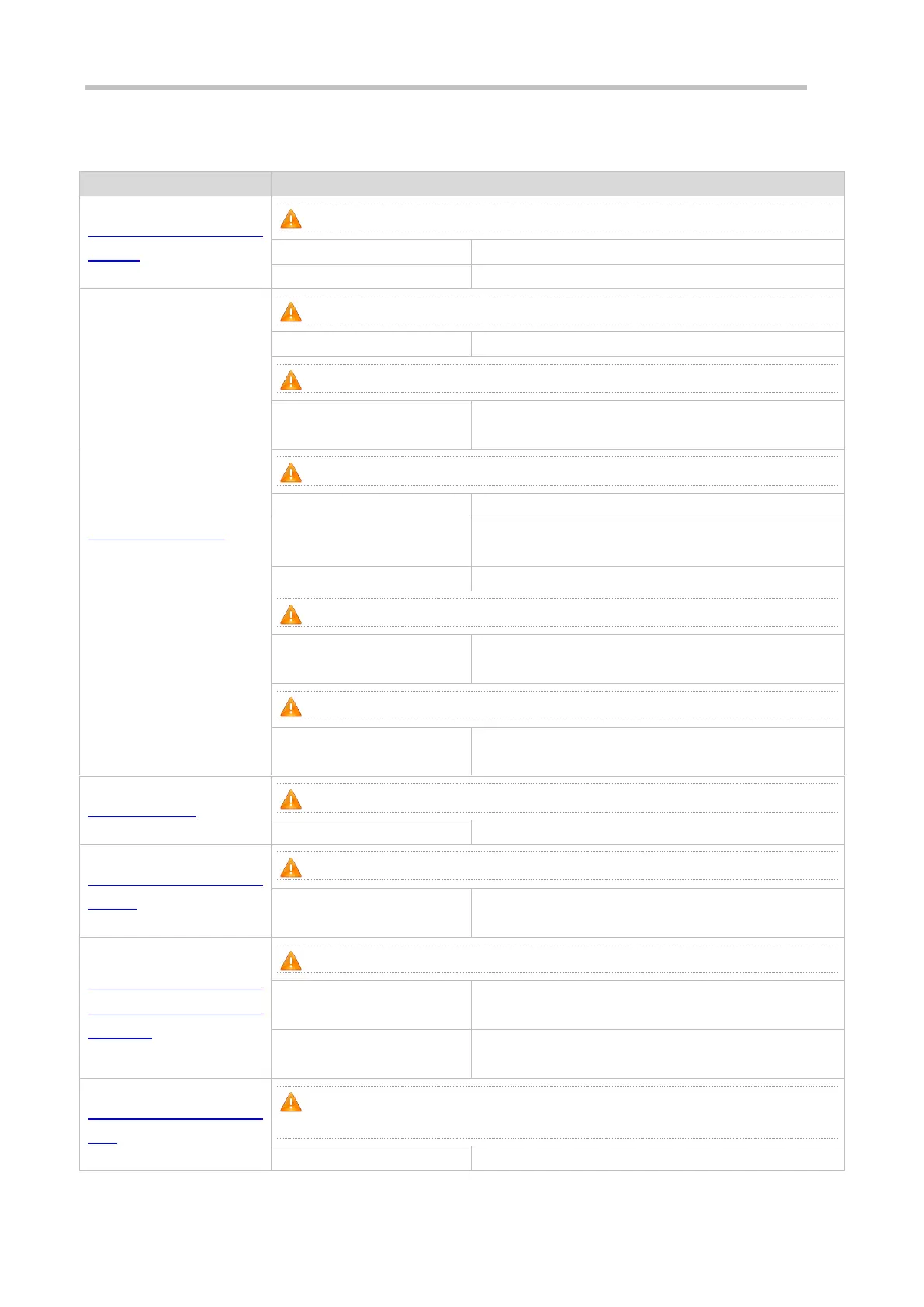Configuration Guide Configuring IPv6
3.4 Configuration
Configuring an IPv6
Address
(Mandatory) It is used to configure IPv6 addresses and enable IPv6.
Enables IPv6 on an interface.
Configures the IPv6 unicast address of an interface.
(Optional) It is used to enable IPv6 redirection on an interface.
Enables IPv6 redirection on an interface.
(Optional) It is used to enable DAD.
Configures the number of consecutive NS packets sent
during DAD.
(Optional) It is used to configure ND parameters.
Configures the reachable time of a neighbor.
Configures the address prefix to be advertised in an RA
packet.
Enables RA suppression on an interface.
(Optional) It is used to configure the maximum number of unresolved ND entries.
Configures the maximum number of unresolved ND
entries.
(Optional) It is used to restrict the number of neoghbors learned on an interface.
ipv6 nd cache
interface-limit
Configures the maximum number of neighbors learned on
an interface.
(Optional) It is used to restrict the MTU of IPv6 packets sent on an interface.
Enabling IPv6 Source
Routing
(Optional) It is used to enable IPv6 source routing.
Configures the device to forward IPv6 packets carrying
the routing header.
Configuring the Sending
Rate of ICMPv6 Error
Messages
ipv6 icmp error-interval
too-big
Configures the sending rate of ICMPv6 Packet Too Big
messages.
Configures the sending rates of other ICMPv6 error
messages and ICMPv6 Redirect packets.
Configuring the IPv6 Hop
Limit
(Optional) It is used to restrict the hop limit of IPv6 unicast packets sent on an
interface.
Configures the IPv6 hop limit.

